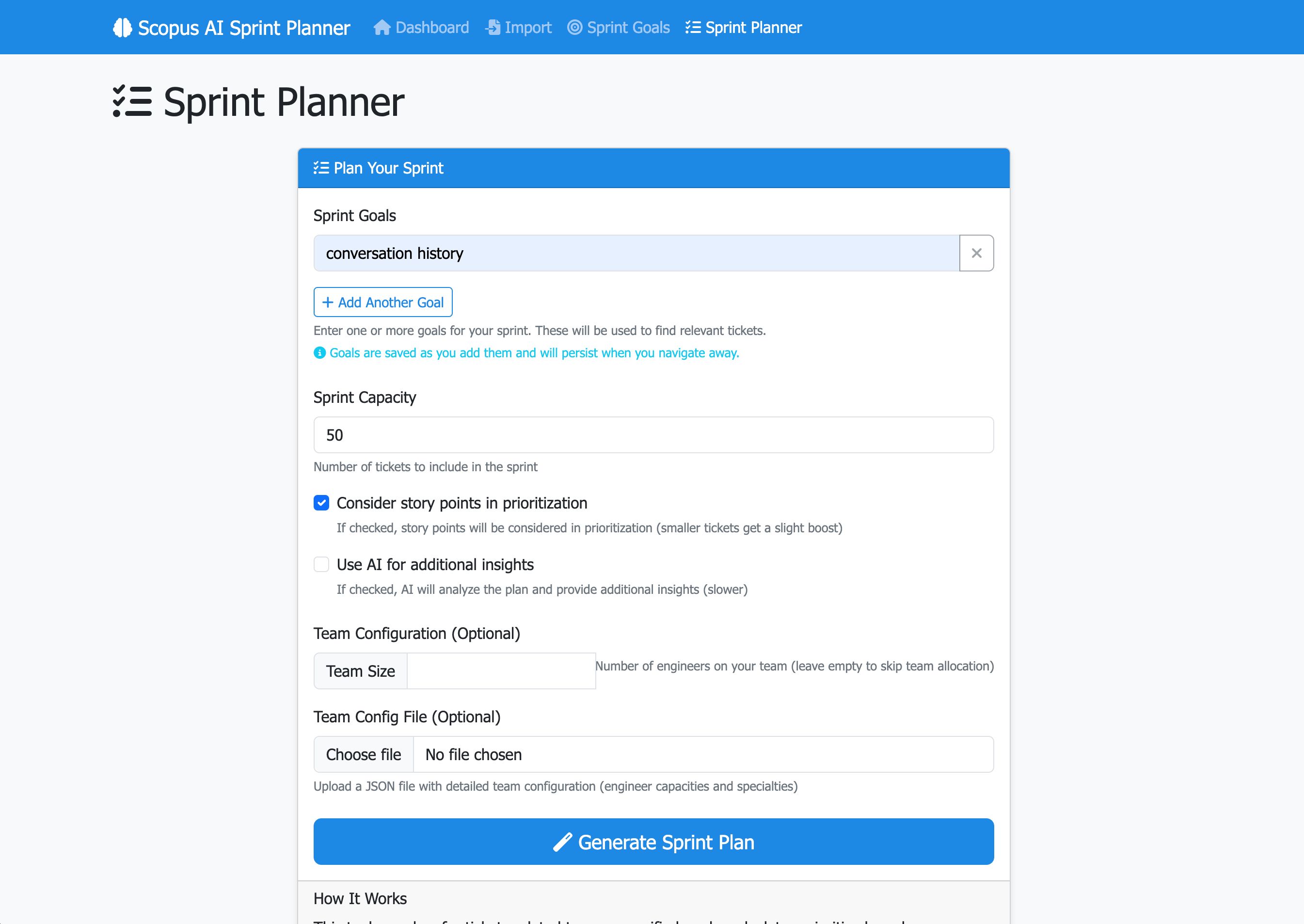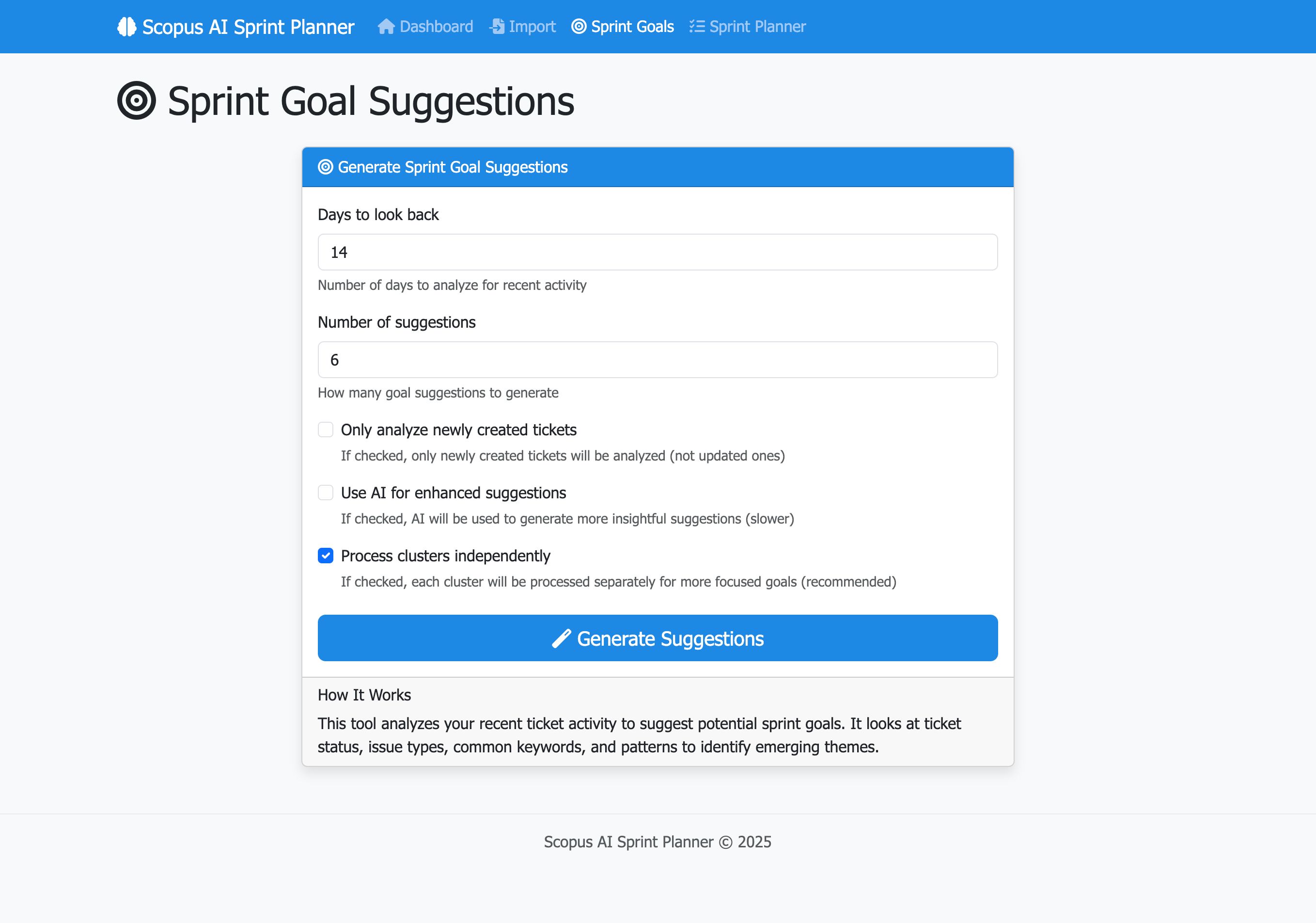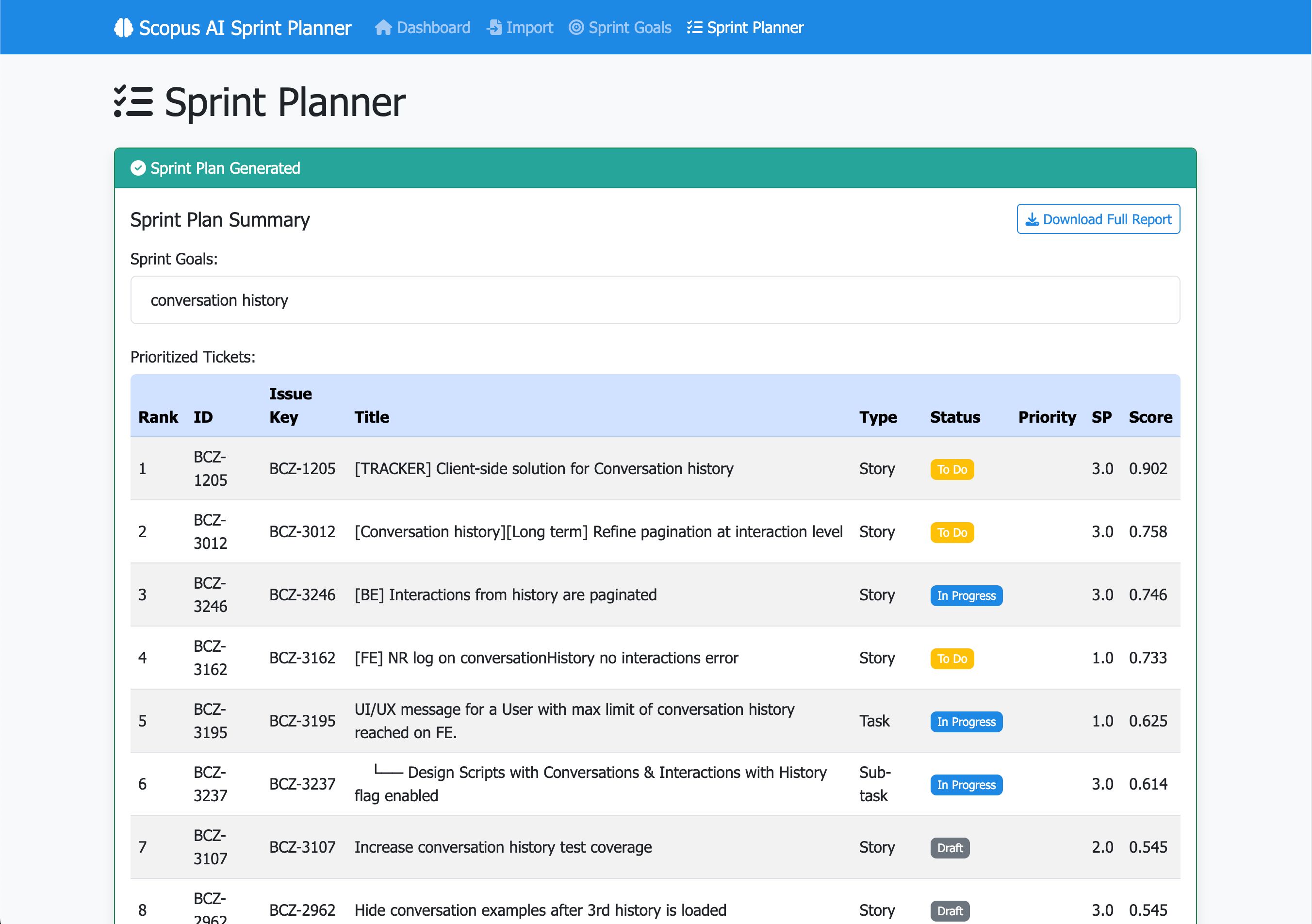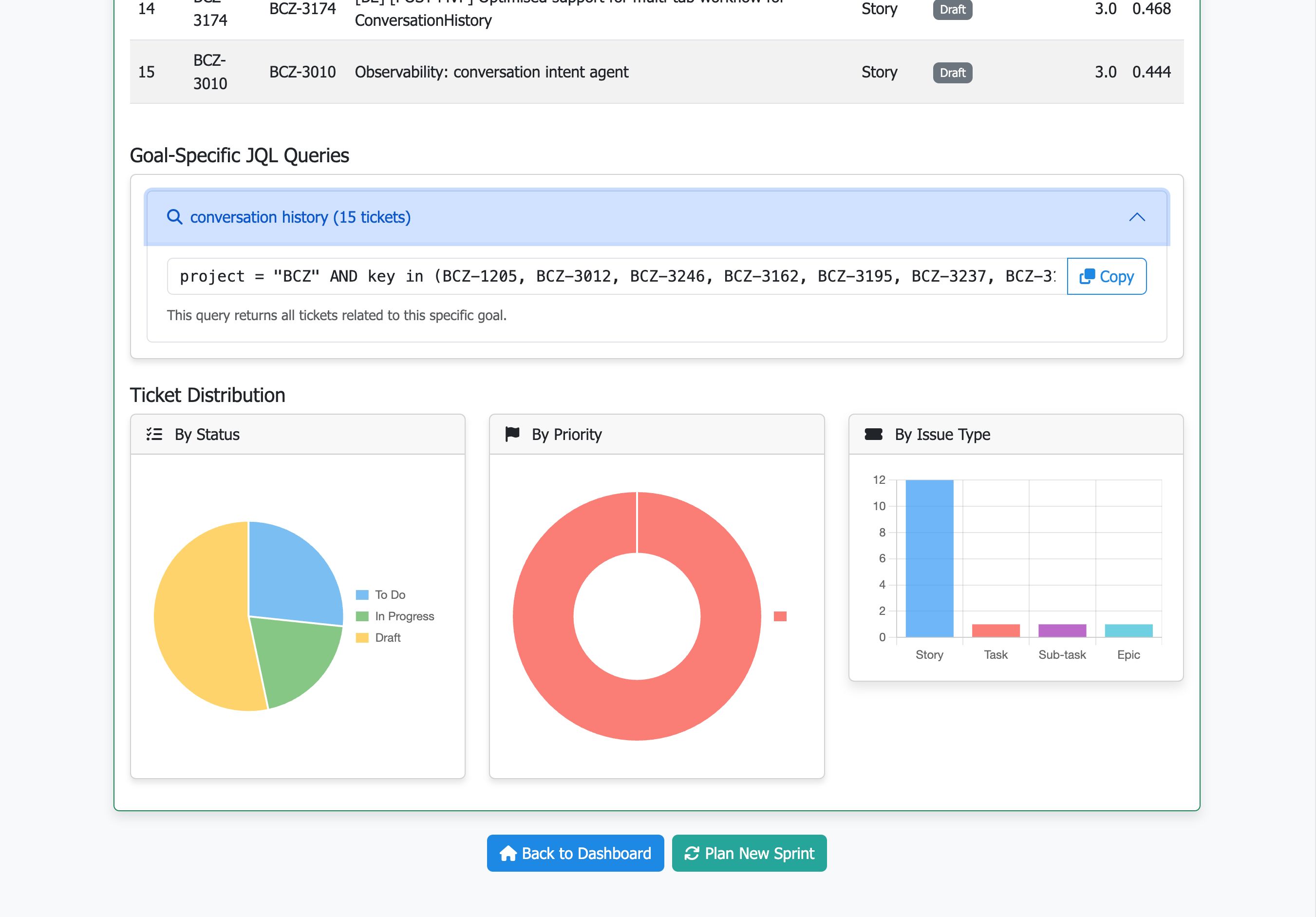The Smart JIRA Sprint Planner
AI-powered tool for automating JIRA sprint planning by analyzing tickets, finding patterns, and suggesting goals.

Project Overview
The Smart JIRA Sprint Planner is my passion project born from the frustrations of JIRA sprint planning. As a product manager managing multiple projects, I found myself spending hours every two weeks reading through tickets, trying to make sense of new information and determining what to prioritize for the next sprint.
Traditional JIRA tools offered limited assistance - basic keyword matching without the ability to understand themes or relationships between tickets. Drawing on my experience with Scopus AI prototypes, I created a solution using vector databases, clustering, and local language models to revolutionize how I approach sprint planning.
This tool imports JIRA tickets, analyzes them using AI, identifies clusters of related work, suggests sprint goals, and prioritizes tickets based on multiple factors. The result is a more strategic approach to sprint planning that saves time while providing better insights into the work that needs to be done.
The Problem & Motivation
As a product manager, JIRA was a constant source of frustration for me. While it served as a necessary repository for tracking work and aligning with engineering teams, its usefulness as a planning tool was severely limited.
Every two weeks, I found myself dedicating one to two hours (sometimes more) to combing through JIRA tickets. The process involved:
- Reading through numerous new tickets created by my team
- Trying to identify patterns and themes among disconnected items
- Determining which tickets aligned with sprint goals
- Prioritizing work without clear insights into relationships between tickets
- Constantly worrying I was missing important details or connections
JIRA's native tools were woefully inadequate. At best, they offered basic keyword matching, with no ability to group related items unless they had been perfectly labeled (which rarely happened in practice).
As my responsibilities at work continued to grow, spending hours on manual sprint planning became increasingly unsustainable. I was convinced I was missing important connections and insights that could make our sprints more effective.
Traditional JIRA View

Smart Planner Dashboard

Having worked on Scopus AI prototypes, I realized I could apply my knowledge of vectors, clustering, and language models to create a better solution. This became my first major side project since focusing on Scopus AI, driven by a practical need to solve a real problem in my day-to-day work.
How It Works
Data Ingestion
The process begins by exporting tickets from JIRA as a CSV file and uploading them to the Smart JIRA Planner.

- •Each ticket is processed and stored in a local database
- •Key fields are vectorized using a small language model for semantic analysis
- •Metadata like ticket status, issue type, and story points are preserved for later analysis
Cluster Analysis
The system filters for recently created tickets, retrieves their vectors, and performs clustering to identify related groups of work.

- •Automatically identifies themes and categories in the backlog
- •Optional LLM enhancement creates descriptive labels for clusters
- •Provides quick insights into emerging themes without manual review
Goal Alignment
Users can define sprint goals using natural language, and the system identifies relevant tickets through vector search.

- •Identifies tickets that align with multiple goals for prioritization
- •Considers story points in prioritization for capacity planning
- •Can suggest workload distribution across team members based on capacity
Results & Benefits
While the Smart JIRA Sprint Planner hasn't necessarily reduced the overall time I spend on sprint planning, it has completely transformed the quality and strategic value of that time:
Enhanced Strategic Perspective
Instead of getting lost in individual tickets, I can immediately see themes and patterns across the entire backlog.
Reduced Blind Spots
The clustering system regularly identifies important connections between tickets that I would have missed through manual review.
Goal-Aligned Planning
I can quickly identify which tickets align with sprint goals, ensuring more focused and coherent sprints.
Better Capacity Planning
The system helps optimize ticket allocation based on story points and team capacity, creating more realistic sprint plans.
The biggest impact has been on the quality of my sprint planning decisions. Rather than spending hours just trying to understand what's in the backlog, I can focus on making strategic decisions about priorities and allocations. This has led to more coherent sprints that better align with product goals.
Additionally, the tool has exposed patterns in our development work that weren't obvious before. In several cases, we identified clusters of related bugs or feature requests that pointed to underlying architectural issues that needed to be addressed.
While this started as a personal solution to a frustrating problem, I believe tools like this should be integrated directly into project management platforms. The gap between how we manage tickets today and what's possible with modern AI techniques represents a significant opportunity to improve how product teams work.
